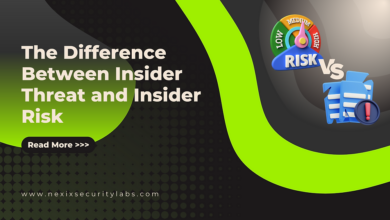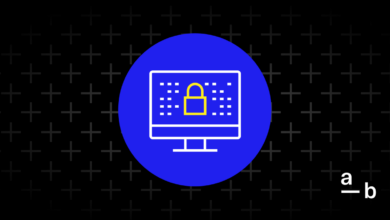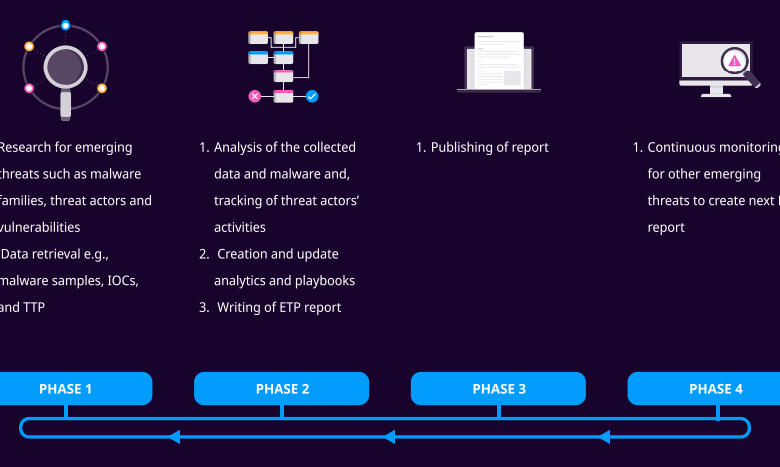
Microsoft Issues Alert Cactus Ransomware via Danabot
Microsoft issues alert on cactus ransomware spreading through danabot ransomware – Microsoft Issues Alert: Cactus Ransomware spreading through Danabot ransomware. Whoa, that’s a mouthful, right? But it’s a serious threat. This nasty combo is causing havoc, and understanding how it works is crucial for protecting yourself and your data. We’re diving deep into the details of this cyberattack, exploring how Danabot is acting as a delivery system for the destructive Cactus ransomware.
Get ready to learn how this works, what to look out for, and how to safeguard yourself.
This isn’t just another ransomware story; it highlights a concerning trend – the evolution of sophisticated attack vectors. Danabot’s role as a distributor shows the increasingly complex methods cybercriminals are using to infiltrate systems. We’ll break down the infection process, the ransomware’s capabilities, and Microsoft’s response, offering practical advice to help you stay safe in this ever-evolving digital landscape.
Danabot’s Role in Cactus Ransomware Distribution
Danabot, a notorious information-stealing malware, has recently emerged as a significant vector for distributing the Cactus ransomware. Its ability to establish persistent footholds on compromised systems and its wide-reaching infection capabilities make it a highly effective tool for ransomware operators. This post delves into the mechanics of Danabot’s role in spreading Cactus ransomware, detailing the infection process and highlighting key indicators of compromise.Danabot facilitates the spread of Cactus ransomware by acting as a dropper and initial access broker.
It initially compromises a system through various methods, then uses its established presence to download and execute the Cactus ransomware payload. This allows the ransomware operators to bypass many traditional security measures and achieve a high success rate in encrypting sensitive data.
Danabot’s Infection Stages and Cactus Ransomware Deployment
The infection process unfolds in several distinct stages, culminating in the deployment and execution of the Cactus ransomware. The following table illustrates this process:
| Stage | Description | Impact | Mitigation |
|---|---|---|---|
| Initial Compromise | Danabot gains initial access to the victim’s system, often through phishing emails containing malicious attachments or links leading to exploit kits. | System vulnerability exploited; potential for data theft. | Employ strong anti-phishing measures, keep software updated, and utilize robust intrusion detection systems. |
| Persistence Establishment | Danabot establishes persistence by creating registry keys, scheduled tasks, or other mechanisms to ensure its continued presence on the system, even after a reboot. | Sustained access to the system, enabling further malicious activities. | Regularly scan for and remove malicious registry entries and scheduled tasks. |
| Data Exfiltration | Danabot steals sensitive data, including credentials, financial information, and other valuable files. This stolen data can be used for further attacks or sold on the dark web. | Loss of sensitive information; potential for identity theft and financial loss. | Implement data loss prevention (DLP) solutions and regularly back up critical data. |
| Cactus Ransomware Deployment | Danabot downloads and executes the Cactus ransomware payload, encrypting files on the compromised system. A ransom note is then displayed, demanding payment for decryption. | Data encryption and business disruption; potential for significant financial loss. | Regularly back up data, maintain offline backups, and implement a robust ransomware recovery plan. |
Comparison of Danabot’s Infection Vectors with Other Ransomware Delivery Methods
Danabot’s infection vectors, primarily phishing emails and exploit kits, are common among various ransomware families. However, Danabot’s ability to establish persistence and exfiltrate data before ransomware deployment distinguishes it from methods relying solely on direct execution of the malicious payload. Other methods include software vulnerabilities, malicious advertisements, and removable media, each presenting unique challenges to security. The multifaceted approach of Danabot makes it a particularly dangerous threat.
Indicators of Compromise (IOCs) Associated with Danabot Infections
Identifying Danabot infections early is crucial for mitigating the risk of subsequent Cactus ransomware deployment. Several IOCs can indicate the presence of Danabot:Specific IOCs are constantly evolving, so relying on up-to-date threat intelligence feeds from reputable security vendors is essential. These feeds provide the latest hashes, domain names, and other indicators associated with Danabot and its variants. Examples of IOCs might include specific file hashes, network connections to known command-and-control servers, and unusual registry entries.
Monitoring these indicators is key to proactive threat detection.
Cactus Ransomware’s Capabilities and Tactics
Cactus ransomware, while leveraging the distribution network of Danabot, possesses its own unique capabilities and tactics designed to maximize its impact and evade detection. Understanding these aspects is crucial for effective prevention and mitigation strategies. This section delves into the technical details of Cactus’s operation, its demands, and the data it targets.
Encryption Techniques
Cactus ransomware employs robust encryption algorithms to render victim files inaccessible. While the precise algorithm isn’t publicly known, its effectiveness in encrypting various file types suggests a sophisticated approach likely involving AES or a similar cipher with a strong key. The encryption process typically involves appending the “.cactus” extension to encrypted files, making them easily identifiable. The strength of the encryption and the complexity of the key generation make decryption without the decryption key extremely difficult, if not impossible, without the attacker’s intervention.
This necessitates the payment of the ransom for access to the decryption key.
Ransom Demands and Payment Methods
Cactus ransomware operators typically demand a ransom payment in cryptocurrency, most commonly Bitcoin. The ransom amount varies depending on factors such as the size and perceived value of the compromised data, and the victim’s perceived ability to pay. The ransom notes often include a deadline for payment, with threats of permanently deleting the encryption key after a certain timeframe.
This creates a sense of urgency and pressure on victims to comply. Payment instructions are usually embedded within the ransom note itself, directing victims to specific cryptocurrency wallets controlled by the attackers.
Data Targeted by Cactus Ransomware
Cactus ransomware targets a broad range of data types, focusing on files with high value to organizations and individuals. This includes but is not limited to:
- Documents: Word (.doc, .docx), Excel (.xls, .xlsx), PowerPoint (.ppt, .pptx), PDF (.pdf), etc.
- Databases: SQL databases, Access databases, and other proprietary database formats.
- Images and Videos: JPEG (.jpg), PNG (.png), GIF (.gif), MP4 (.mp4), AVI (.avi), etc.
- Audio Files: MP3 (.mp3), WAV (.wav), etc.
- System Files: While not the primary target, system files can also be encrypted, potentially causing significant disruption to operations.
The indiscriminate nature of the encryption means that even seemingly unimportant files can be affected, leading to substantial data loss and operational downtime.
Examples of Ransom Notes and Their Variations
Ransom notes from Cactus ransomware attacks typically follow a similar pattern, but may exhibit minor variations in wording and formatting. The core message remains consistent: pay the ransom to regain access to your data. Examples of ransom note variations include:
- A concise note stating the encryption details, ransom amount, and payment instructions.
- A more elaborate note explaining the situation, emphasizing the irreversibility of the encryption, and including a deadline for payment.
- Notes that contain unique identifiers or decryption keys for each victim, ensuring that each victim receives a personalized ransom note.
- Notes that may include threats of data leakage or public disclosure if the ransom is not paid, intended to increase pressure on the victim.
The variations are largely cosmetic, with the core message – the demand for payment – remaining constant. The attackers aim for clear and unambiguous communication to ensure victims understand the demands and how to comply.
Microsoft’s Security Alert and Response
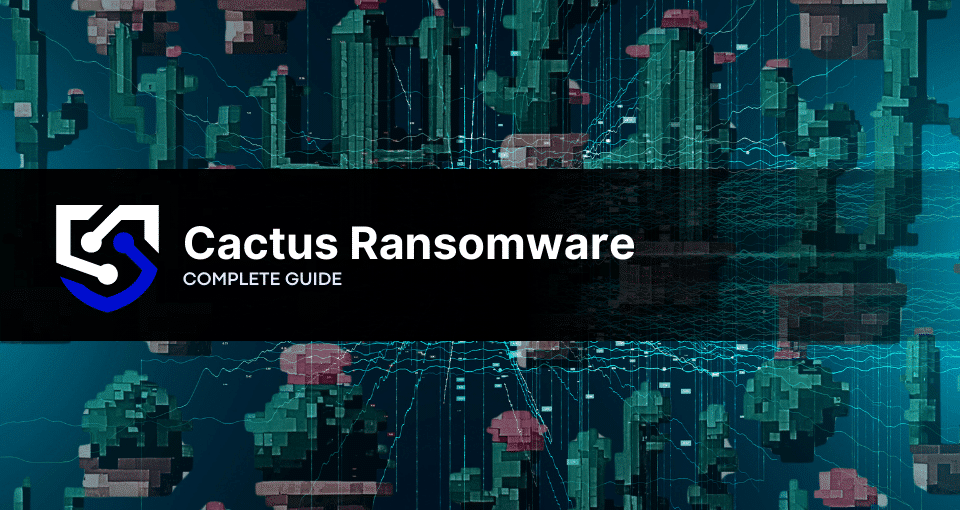
Microsoft’s security alert regarding the Cactus ransomware, spread through the Danabot malware, didn’t issue a standalone, publicly-named advisory like some other major ransomware campaigns. Instead, the information was disseminated through various channels, including their threat intelligence feeds and updates to their security products. The focus was less on a single, dramatic announcement and more on proactive protection and detection updates within their ecosystem.
This approach reflects a shift in how Microsoft addresses evolving threats, emphasizing integrated defense mechanisms over reactive public alerts.Microsoft’s response centered on improving the detection capabilities of its security solutions like Windows Defender and Microsoft Defender for Endpoint. These updates focused on identifying malicious files and processes associated with both Danabot and Cactus ransomware, enabling early detection and prevention.
They also likely included enhanced behavioral analysis to flag suspicious activities consistent with ransomware deployment, such as unusual file encryption patterns or attempts to disable security features. Furthermore, the alert likely emphasized the importance of keeping systems patched and up-to-date with the latest security updates, as many ransomware attacks exploit known vulnerabilities.
Microsoft’s Security Recommendations and Mitigations
Microsoft’s recommendations were primarily focused on preventative measures and proactive threat hunting. They likely advised organizations to implement robust endpoint detection and response (EDR) solutions, regularly update their software and operating systems, and maintain strong network security hygiene. Specific mitigations likely included enabling advanced threat protection features within their security products, enforcing multi-factor authentication (MFA), and implementing strict access control policies.
The emphasis was clearly on a multi-layered approach to security, acknowledging that a single solution is not sufficient to protect against sophisticated ransomware attacks like Cactus.
Microsoft’s warning about Cactus ransomware spreading via Danabot is a serious wake-up call about cybersecurity. Building robust, secure applications is crucial, and that’s where understanding the evolving landscape of application development comes in; check out this insightful article on domino app dev the low code and pro code future to learn more about building secure apps.
Ultimately, protecting your data from threats like Cactus ransomware requires a multi-pronged approach, including secure coding practices.
Effectiveness of Microsoft’s Response
Assessing the effectiveness of Microsoft’s response requires more data than is publicly available. While we can’t quantify the exact reduction in infections directly attributable to Microsoft’s actions, the integrated approach likely contributed to mitigating the spread. The updates to their security products undoubtedly helped many organizations detect and prevent Cactus ransomware infections before significant damage occurred. However, the effectiveness is also dependent on the adoption and proper configuration of Microsoft’s security solutions by end-users and organizations.
A proactive and well-maintained security posture, incorporating Microsoft’s recommendations, would be significantly more effective than relying solely on automatic updates. The lack of a widespread, catastrophic outbreak suggests the response, combined with user vigilance, was relatively successful in containing the threat.
Preventative Measures Against Cactus and Danabot
The spread of Cactus ransomware via Danabot highlights the interconnected nature of cyber threats. Effective prevention requires a multi-pronged approach addressing both the initial infection vector (Danabot) and the payload (Cactus).
Organizations should consider these preventative measures:
- Regular Software Updates: Patch all software, including operating systems, applications, and firmware, promptly. This closes vulnerabilities exploited by malware like Danabot.
- Robust Endpoint Detection and Response (EDR): Implement a comprehensive EDR solution to detect and respond to malicious activity in real-time. This allows for early identification of suspicious processes and potential ransomware deployment.
- Multi-Factor Authentication (MFA): Enforce MFA for all user accounts to prevent unauthorized access, even if credentials are compromised.
- Network Segmentation: Segment the network to limit the impact of a breach. If one segment is compromised, the ransomware’s spread to other critical systems is restricted.
- Email Security: Implement robust email security measures, including spam filtering, anti-phishing, and secure email gateways, to prevent Danabot infections from phishing emails.
- Regular Backups: Maintain regular and tested backups of critical data, stored offline or in a secure cloud environment. This allows for data recovery in the event of a ransomware attack.
- Security Awareness Training: Educate employees about phishing scams and social engineering tactics used to distribute malware like Danabot. This empowers them to identify and report suspicious emails or websites.
- Application Whitelisting: Restrict the execution of unauthorized applications to prevent malware from running. Only approved applications are allowed to execute.
Impact and Victims of the Attack
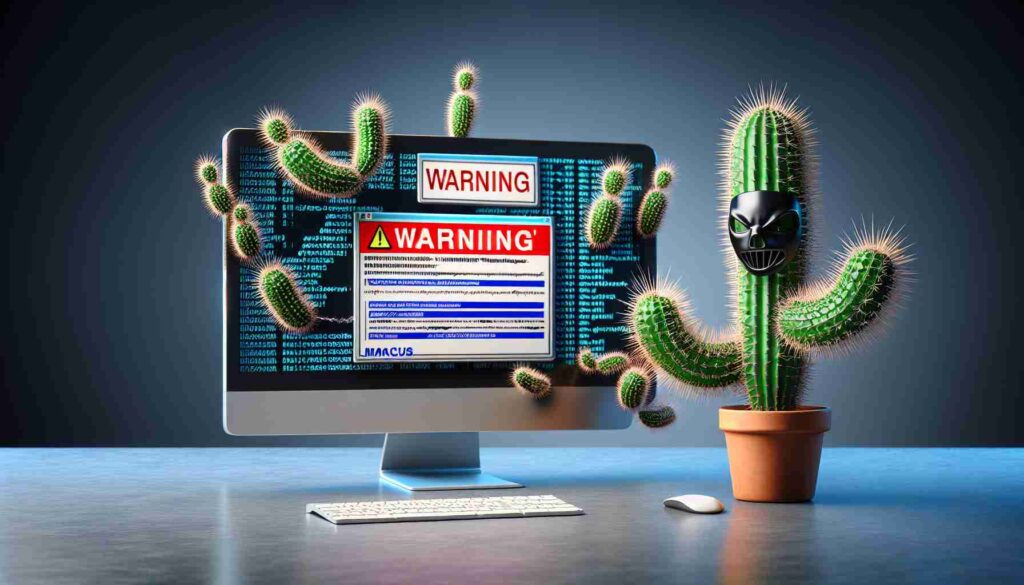
The Cactus ransomware attack, facilitated by the Danabot malware, has had a significant and far-reaching impact, affecting various sectors and causing substantial financial and reputational damage. While precise figures on the number of victims remain unavailable due to the secretive nature of ransomware attacks, the broad capabilities of Cactus and Danabot’s widespread distribution suggest a substantial number of organizations have been affected.The industries most vulnerable to this type of attack are those that rely heavily on digital data and have less robust cybersecurity infrastructure.
This includes small and medium-sized businesses (SMBs), healthcare providers (due to the sensitive nature of patient data), educational institutions, and manufacturing companies. Larger enterprises are also vulnerable, though they often have more resources dedicated to cybersecurity and incident response. The indiscriminate nature of Danabot’s infection method, however, means no sector is truly immune.
Industries and Organizations Most Affected, Microsoft issues alert on cactus ransomware spreading through danabot ransomware
The broad reach of Danabot and the destructive potential of Cactus mean that a wide range of organizations are susceptible. The lack of publicly available, comprehensive victim lists makes it difficult to pinpoint exact percentages, but anecdotal evidence and threat intelligence reports suggest a disproportionate impact on SMBs due to their often-limited cybersecurity budgets and expertise. Healthcare providers are also frequently targeted due to the high value of patient data on the dark web.
Manufacturing companies, with their reliance on operational technology (OT) systems, are particularly vulnerable to disruptions that can halt production lines and damage physical equipment.
Financial and Reputational Damage
The financial consequences of a Cactus ransomware attack can be devastating. Victims face direct costs associated with paying the ransom (if they choose to), hiring cybersecurity experts for incident response and recovery, and potentially facing legal repercussions for data breaches. The indirect costs, such as lost productivity, business interruption, and damage to customer trust, can be even more significant and long-lasting.
Reputational damage can be severe, leading to lost customers, reduced investor confidence, and difficulty attracting new talent. In some cases, the negative publicity can be enough to force a company out of business.
Data Recovery Challenges
Recovering data after a Cactus ransomware attack is a complex and challenging process. Even if the ransom is paid (which is not recommended by security experts), there’s no guarantee that the attackers will provide a functional decryption key. Furthermore, the encryption techniques used by Cactus might be sophisticated and difficult to reverse. Victims may need to rely on backups, but if these backups are not properly managed and regularly tested, they might be corrupted or inaccessible.
The process of restoring data from backups can be time-consuming and disruptive, further exacerbating the financial and operational impact of the attack.
Hypothetical Scenario: Cactus Ransomware Attack on a Small Business
Imagine “Cozy Corner Cafe,” a small family-owned bakery, falls victim to a Cactus ransomware attack. The cafe’s point-of-sale (POS) system, which handles customer orders and financial transactions, is encrypted. Their customer database, containing valuable contact information and purchase history, is also locked. Without access to their POS system, the cafe is unable to process orders or take payments. They lose revenue daily and face the added cost of hiring a cybersecurity firm to assess the damage, attempt data recovery, and implement improved security measures. The cafe’s reputation suffers as customers become wary of providing their information. Even after recovering some data, rebuilding trust and regaining lost business will be a long and difficult process. The cost of the attack could potentially force them to close their doors permanently.
Technical Analysis of Cactus Ransomware
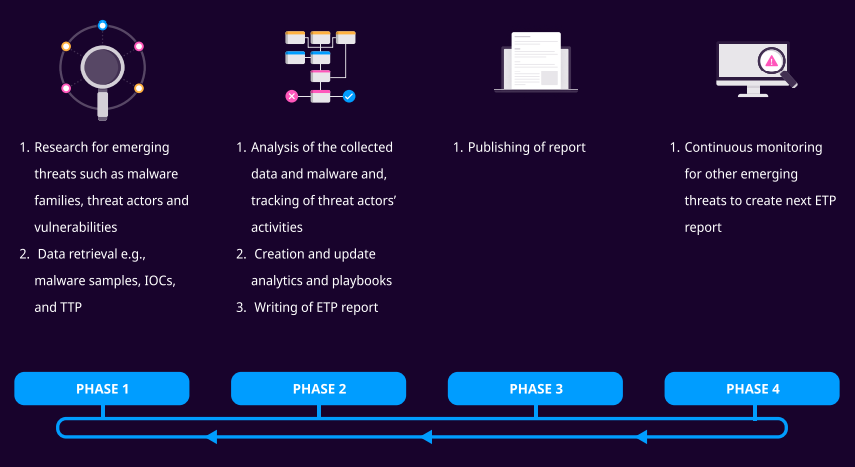
Analyzing a Cactus ransomware binary reveals a sophisticated piece of malware designed for maximum disruption and data exfiltration. This analysis focuses on understanding its functionality, communication methods, and how it compares to other known ransomware families. The goal is to highlight key technical characteristics to aid in detection and mitigation efforts.
A typical analysis begins with unpacking the sample to understand its core functionality. Reverse engineering techniques, such as dynamic analysis using sandboxes and static analysis using disassemblers, are crucial. This allows researchers to trace the execution flow, identify key functions, and understand the malware’s interactions with the operating system and network.
Cactus Ransomware Functionality
Cactus ransomware typically employs a multi-stage infection process. The initial stage often involves exploiting vulnerabilities or using social engineering techniques to gain initial access to a victim’s system. Subsequent stages involve privilege escalation, identifying target files, encrypting those files using a strong encryption algorithm, and finally, displaying a ransom note demanding payment for decryption. The encryption process usually targets specific file types, such as documents, databases, and images, maximizing the impact on the victim.
Communication Channels and Infrastructure
Understanding how Cactus ransomware communicates with its command-and-control (C2) server is critical for disrupting its operations. Analysis of network traffic generated by the malware reveals the use of various techniques to evade detection. These may include using encrypted communication channels, obfuscated domain names, or utilizing proxies and VPNs to mask its origin. Identifying these communication channels and the infrastructure behind them is crucial for disrupting the ransomware’s operations and preventing further infections.
Comparison with Other Ransomware Families
Comparing Cactus ransomware with other known families, such as Ryuk, Conti, or REvil, reveals similarities and differences in their technical characteristics. While many share common functionalities, such as file encryption and ransom note display, they differ in their encryption algorithms, communication methods, and evasion techniques. For example, Cactus might utilize a different encryption algorithm than Ryuk, making decryption more challenging.
Understanding these nuances allows for the development of more targeted countermeasures.
Technical Characteristics of Cactus Ransomware
The following table summarizes key technical characteristics of Cactus ransomware, their significance, and potential countermeasures:
| Feature | Description | Significance | Countermeasures |
|---|---|---|---|
| Encryption Algorithm | Often uses AES or RSA, potentially combined with other algorithms for stronger encryption. | Strong encryption makes decryption challenging without the decryption key. | Implement strong endpoint protection, regular backups, and multi-factor authentication. |
| File Targeting | Selectively targets specific file types, maximizing impact on the victim. | Causes significant data loss and business disruption. | Regular backups and robust data recovery plans. |
| C2 Communication | Uses various techniques to evade detection, such as encrypted communication and obfuscated domains. | Makes tracking and disrupting the ransomware operation difficult. | Intrusion detection and prevention systems (IDPS), network monitoring, and threat intelligence feeds. |
| Persistence Mechanism | May use registry keys, scheduled tasks, or other methods to ensure persistence across reboots. | Allows the ransomware to re-infect the system even after a reboot. | Regular system scans with anti-malware software and removal of malicious entries. |
| Self-Propagation | May spread to other systems on the network through various means. | Causes a wider infection across the organization’s network. | Network segmentation, access controls, and patching of vulnerabilities. |
Last Recap: Microsoft Issues Alert On Cactus Ransomware Spreading Through Danabot Ransomware
The Microsoft alert on the Cactus ransomware spread via Danabot serves as a stark reminder of the ever-present threat of cyberattacks. Understanding the mechanics of this attack, from Danabot’s initial infiltration to Cactus’s data-encrypting capabilities, is vital for effective prevention. By implementing robust security measures and staying informed about the latest threats, we can significantly reduce our vulnerability to these malicious attacks.
Don’t wait until it’s too late – proactive security is your best defense.
Questions Often Asked
What makes Cactus ransomware particularly dangerous?
Cactus ransomware is dangerous because of its sophisticated encryption techniques and the significant damage it can inflict on both individuals and organizations. The data it targets is often crucial, leading to substantial financial and reputational losses.
How can I tell if my system is infected with Danabot?
Signs of Danabot infection can include unusual network activity, sluggish performance, and the presence of unfamiliar files or processes. Regular system scans with reputable antivirus software are crucial for early detection.
Should I pay the ransom if infected with Cactus ransomware?
Paying the ransom is generally not recommended. There’s no guarantee that you’ll get your data back, and you’ll be encouraging further criminal activity. Focus on data backups and recovery strategies instead.
What are some low-cost or free ways to protect myself?
Regular software updates, strong passwords, multi-factor authentication, and using reputable antivirus software are all crucial, and many options are free or low-cost.
